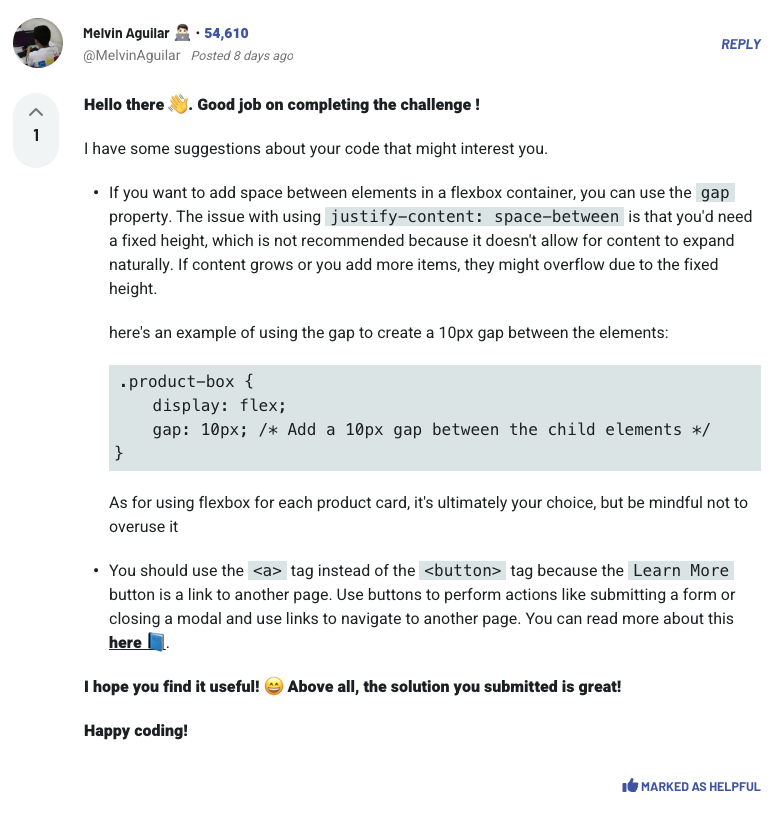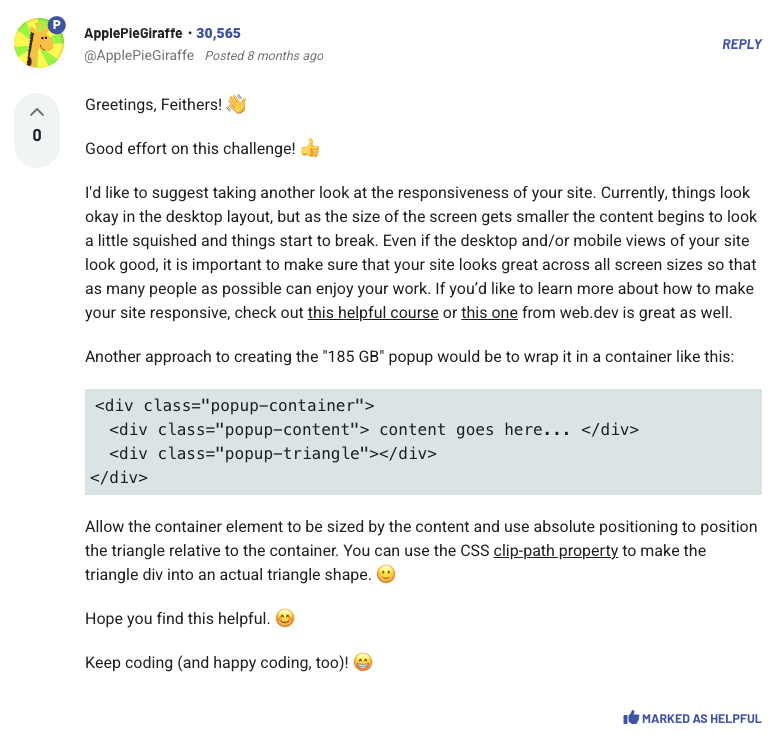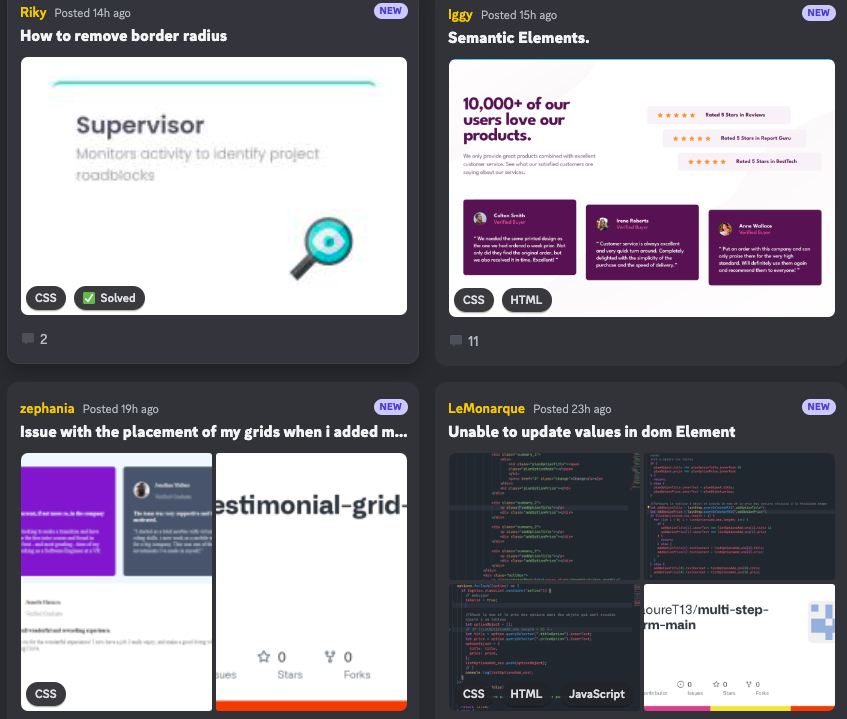
How to effectively give and receive feedback in web development
Boost your web development skills with effective feedback techniques. Discover easy-to-follow strategies for improving code quality and learning from others
Table of contents
In the world of web development, one of the most valuable tools we have is feedback. It's not just about fixing errors or applauding good work; it's about coming together as a community to learn and grow. Feedback is a powerful tool that can help you learn and grow as a developer.
Imagine feedback as a friendly chat in the world of web development, where each opinion is valued. It doesn't matter if you're coding your first line or have been coding for years; these conversations help us grow. Feedback opens our eyes to new perspectives and motivates us to aim higher.
In this article, we dive into more than just the basics of giving and receiving feedback. We explore how it influences our collaborative environment, enhances our skills, and encourages us all to improve. It's all about fostering a welcoming atmosphere where everyone is encouraged to contribute their ideas, learn from each other, and help shape the world of web development.
Why feedback is crucial for web development success
Feedback is essential for success in software development. It's essential not just for those starting out or early in their careers but also for experienced pros like senior developers or managers. Wherever you are in your career path, giving and receiving feedback is key to growing and excelling.
In software development, feedback is much more than just giving advice or suggestions. It's a way to learn and improve together. It allows everyone, regardless of their experience level, to pick up new ideas, refine their skills, and stay up-to-date with the latest in technology.
Giving feedback is just as valuable. It helps you solidify your knowledge, think more critically, and clearly explain your ideas. It's a win-win: the person getting feedback learns something new, and you grow as a communicator and mentor.
So, in short, feedback isn't just a nice-to-have in software development; it's a must-have. It creates a friendly, supportive environment where everyone can share, learn, and get better together. That's why it's such a big part of being successful as a developer and something we encourage on Frontend Mentor.
Best practices for constructive code feedback in web development
Give specific feedback
When providing feedback to another person, be clear about what you’re giving feedback on. Specifically, when reviewing code, point out the line numbers and code sections where you have feedback. This allows the person you’re giving feedback to pinpoint the exact place for them to improve on.
Use a constructive tone
Many people often say they don’t enjoy providing feedback because they feel their tone can be harsh or judgemental. When giving feedback, try to keep your tone positive but constructive. Instead of saying, “This code is really bad,” you can say, “This code could be improved by…” A good rule of thumb to follow is to avoid ‘negative’ words.
Provide context
Instead of providing a code snippet and saying, “Try this,” it is a good idea to offer extra insights and information behind why the developer should try your suggestion. Providing the developer with context into the ‘why’ behind what they need to do will help the developer learn and understand. @MelvinAguilar does a great job of providing context and a solution to a user in the screenshot below.

You can read @MelvinAguilar's full solution feedback comment here.
Give solution-focused feedback
Similarly to providing context, offering possible solutions or code snippets to show the developer what they need to do will help with their learning journey.
Identify and address key priorities
If you have multiple feedback points, prioritize them based on their severity or impact on the codebase. When providing feedback, it's important to organize your points by priority. Start by identifying the most critical issues that could have a significant impact on the project's success or the code's functionality. Address these first to ensure that the recipient can focus on what's most important without feeling overwhelmed. This approach helps in clearly communicating the key areas that need immediate attention, while also providing a manageable way for the receiver to tackle the feedback without getting lost in less crucial details.
Use code examples
If applicable, use code examples to illustrate your feedback. Show how the code could be modified to address the issue. Sometimes, just providing feedback in the form of words isn’t comprehensive enough, so providing the developer with code snippets can be helpful to them.
Be respectful
Respect the developer's work and effort. Acknowledge the positive aspects of their code before pointing out areas for improvement. We all need to start somewhere, so be mindful of that. @ApplePieGiraffe does an excellent job of keeping his tone positive and respectful while also providing constructive suggestions in his feedback below:

You can read @ApplePieGiraffe's full solution feedback comment here.
How to implement feedback in your coding process effectively
Keep an open mind
When receiving feedback, be mindful that the developer provides you with an opportunity for growth and development. Be aware that this isn’t a criticism of your work but rather an opportunity for you to improve on your work! @tarasis does a great job at receiving the feedback they received with grace and an open mind.

You can read @tarasis's full response to feedback here.
Clarify the feedback
If you’ve received vague feedback, don’t hesitate to ask for clarification. Ask the person for specific examples, code snippets, or resources to help you understand where you could improve.
Reflect
Instead of copying/pasting the developers' code snippets or feedback into your work, take the time to reflect and understand the feedback you’ve received. Analyze their comments and suggestions and use them to understand better what they’re suggesting. Don’t be afraid to dig deeper and do additional research on the improvements that they’ve suggested.
Prioritize feedback
Not all feedback is equally important. Prioritize the feedback based on its significance and impact. Focus on addressing the most critical points first. This can be done by analyzing the effect of the feedback. Will addressing it improve the product or code's functionality, user experience, security, or performance? Assess how significant the changes could be. Another helpful way to prioritize feedback is by analyzing the frequency of it. Have multiple people mentioned it? If you receive similar feedback on your projects, that might indicate a recurring issue.
Develop an action plan
Create a clear and actionable plan for addressing the feedback. Break down the steps into bite-sized chunks to make the necessary improvements. This could be done in a task management tool like Asana, Trello, or Notion.
Seek support and guidance
If you need help making the necessary changes, seek support and advice from other web developers. We have a thriving Discord community filled with people asking and answering questions!

Implement changes slowly
Take your time with the process. Implement changes gradually to ensure they are well-thought-out and well-executed. Test and iterate your code as needed.
Reflect and iterate
Reflect on the changes you've made and their outcomes. Are they achieving the desired results? If not, be willing to adjust and iterate your approach.
Celebrate successes
Acknowledge and celebrate your accomplishments along the way. Recognize and reward yourself for the progress you've made.
Maintain a growth mindset
Embrace a growth mindset that sees challenges or setbacks as opportunities to learn and grow. Keep seeking feedback and striving for improvement. If you’re interested in learning more about a growth mindset, consider reading Mindset: The Psychology of Success by Carol Dweck
Share your experience
Share your experience and the lessons you've learned with others. Your journey in implementing feedback can inspire and help others improve. Give others feedback!
Conclusion
As we wrap up our guide on effective feedback in web development, let's remember that the journey of learning and growth is a two-way street. We encourage you to not only apply the strategies we've discussed for giving constructive feedback but also to actively seek out and welcome feedback from others.
Try giving feedback to your peers and fellow developers using the approaches we've outlined in this article. Notice how it not only helps them but also enhances your own understanding and communication skills. Similarly, when you receive feedback, embrace it with an open mind. Implementing the changes and suggestions you receive is crucial for your growth as a web developer. It is through this continuous cycle of giving and receiving feedback that we all grow and improve.
It's through these exchanges that we not only sharpen our technical skills but also foster a collaborative and supportive web development community. Remember, every piece of feedback is an opportunity to learn, to teach, and to grow together towards becoming more skilled and versatile web developers.
Practice building projects like a pro
- Portfolio-ready projects
- Professional design files
- Curate your profile
- Unlimited solution refinement